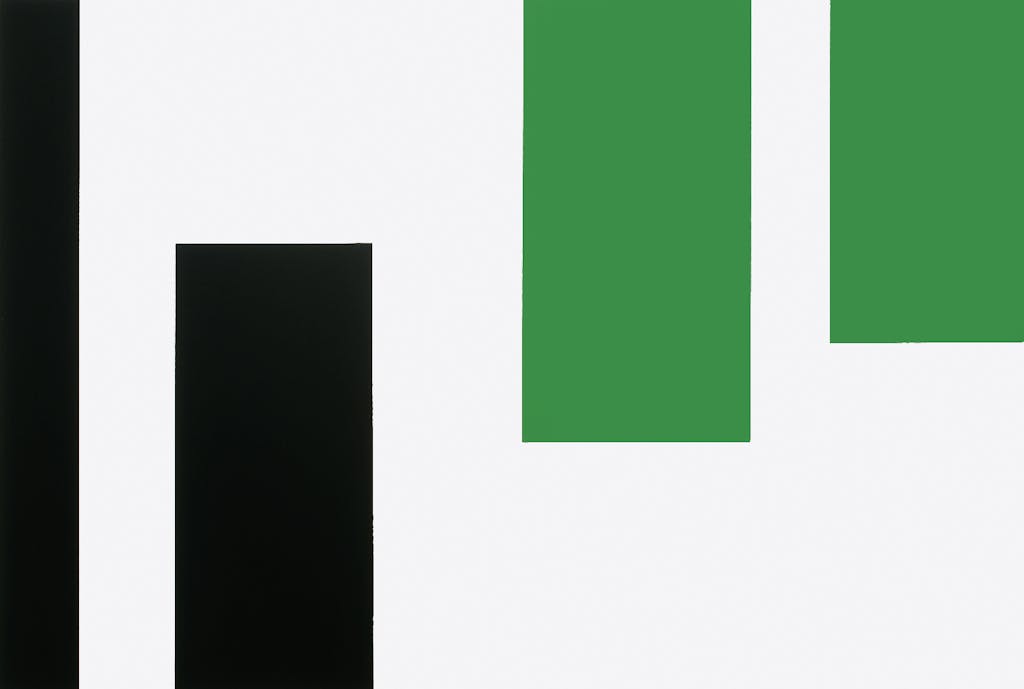Knoebel’s early oeuvre is marked by his search for an immaterial picture with basic compositional means, such as line and light, radically minimising his artistic materials. Of fundamental importance for this concept are light-based works, such as his ‘Projektionen’ (‘Projections’) from the late 1960s in which shapes of light are cast onto interior or exterior walls with a projector.
The programmatic sobriety in Knoebel’s oeuvre also becomes clear in his utilisation of industrially produced materials such as aluminium or fibreboard panels, which he has used since the beginning of his years of study at the Düsseldorf Art Academy. His fibreboard pictures often consist of several combined panels, the material’s intrinsic grain patterning elevated to the status of painting. For a long time its warm brown tone was, in addition to black and white, the only colour which Knoebel allowed to appear in his works.
In the 1970s, however, Knoebel began to expand his formal vocabulary in a surprising way by letting bright colours enter his works and using free forms: for example in his ‘Siebenecke’ (‘Heptagons’) and ‘Messerschnitte’ (‘Knife Cuts’).
His early fascination by Kazimir Malevich’s Suprematist manifestos led Knoebel to pursue the Russian artist’s investigation of figure and ground up to the point of transferring this principle of painting into a spatial context. His famous key works ‘Raum 19’ (1968) and ‘Genter Raum’ (1979–80) can be understood as walk-in installations or three-dimensional, complex images in which colours are freed from the flatness of painting. Both works are not static or fixed but have existed in several different versions according to the particular exhibition space. The structures and forms Knoebel has articulated in ‘Raum 19’ have led to numerous subsequent works. One of them is a series of seven ‘Schattenräume’ (‘Shadow Spaces’), created in the years 1988 to 1989, which KEWENIG honoured with a catalogue published in 2019.
As a sign of German-French reconciliation, the artist designed various coloured-glass windows for the Cathedral in Reims in 2011 and 2015. His charity Kinderstern e.V. supports selected projects to benefit children in need: www.kinderstern.com. Imi Knoebel lives and works in Düsseldorf.
